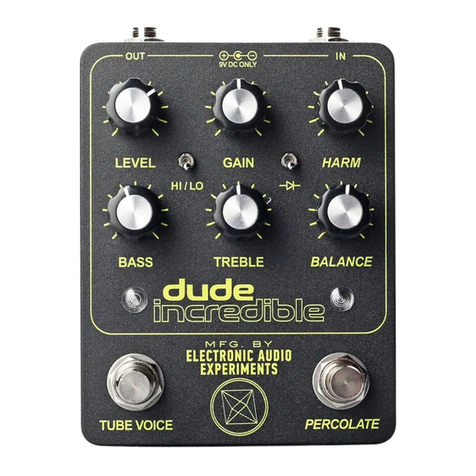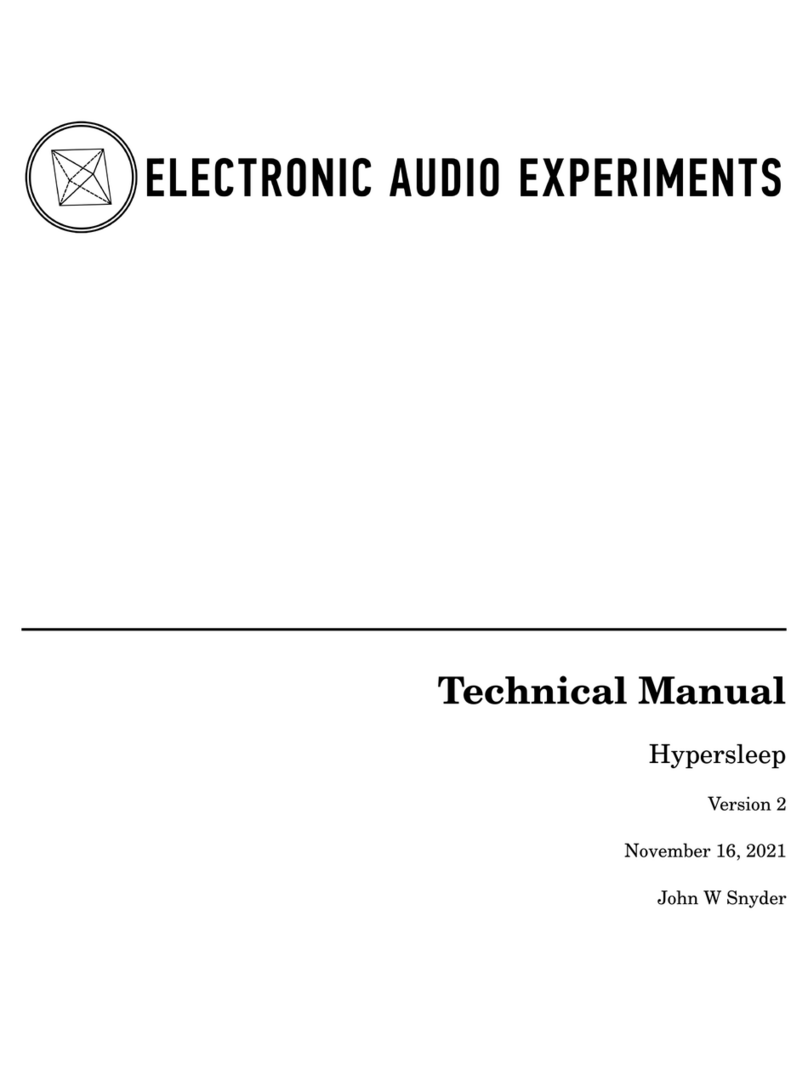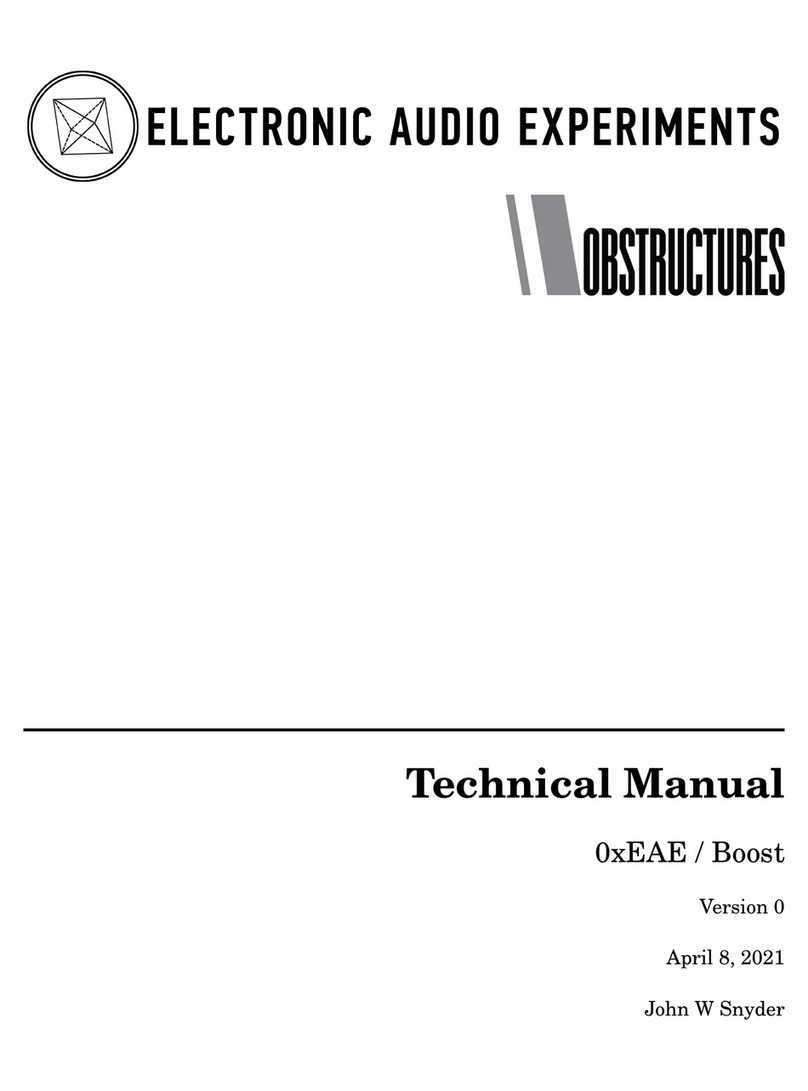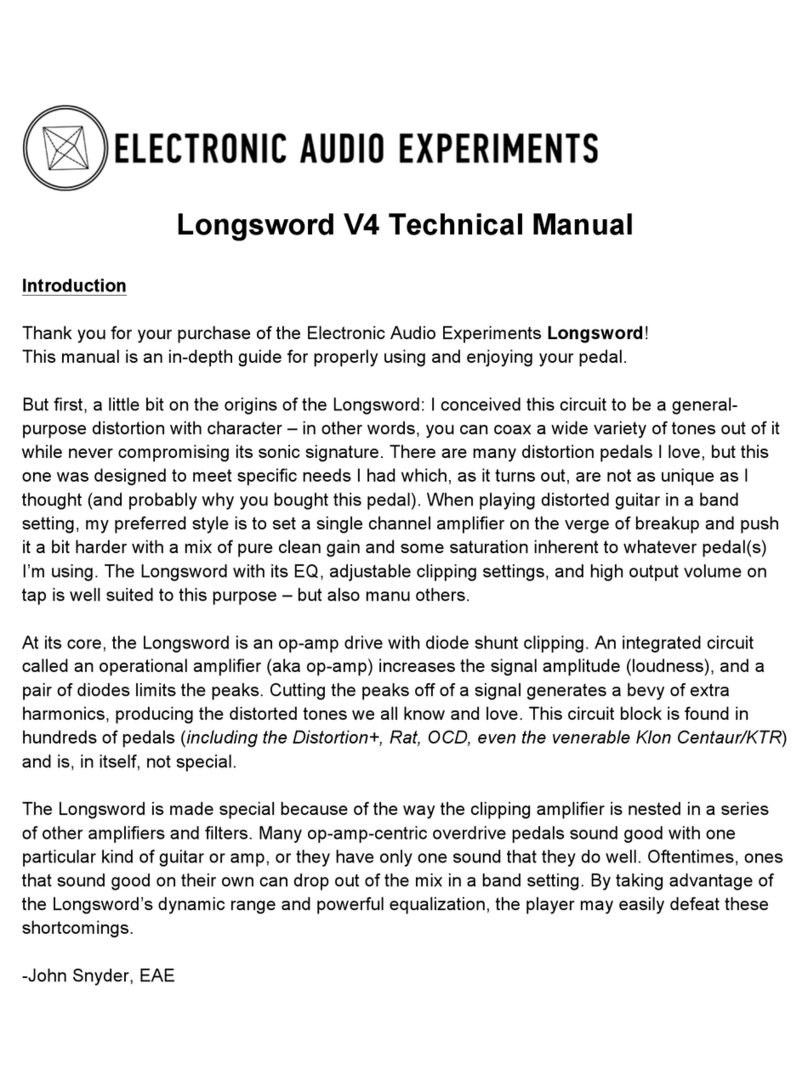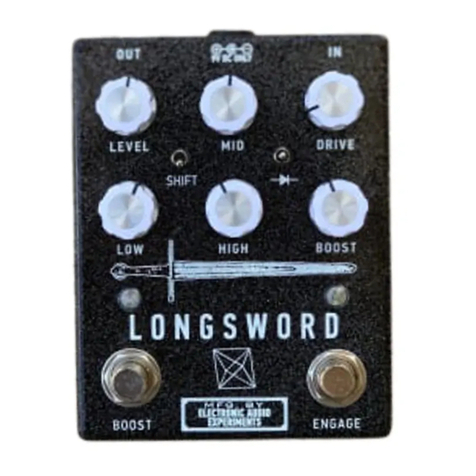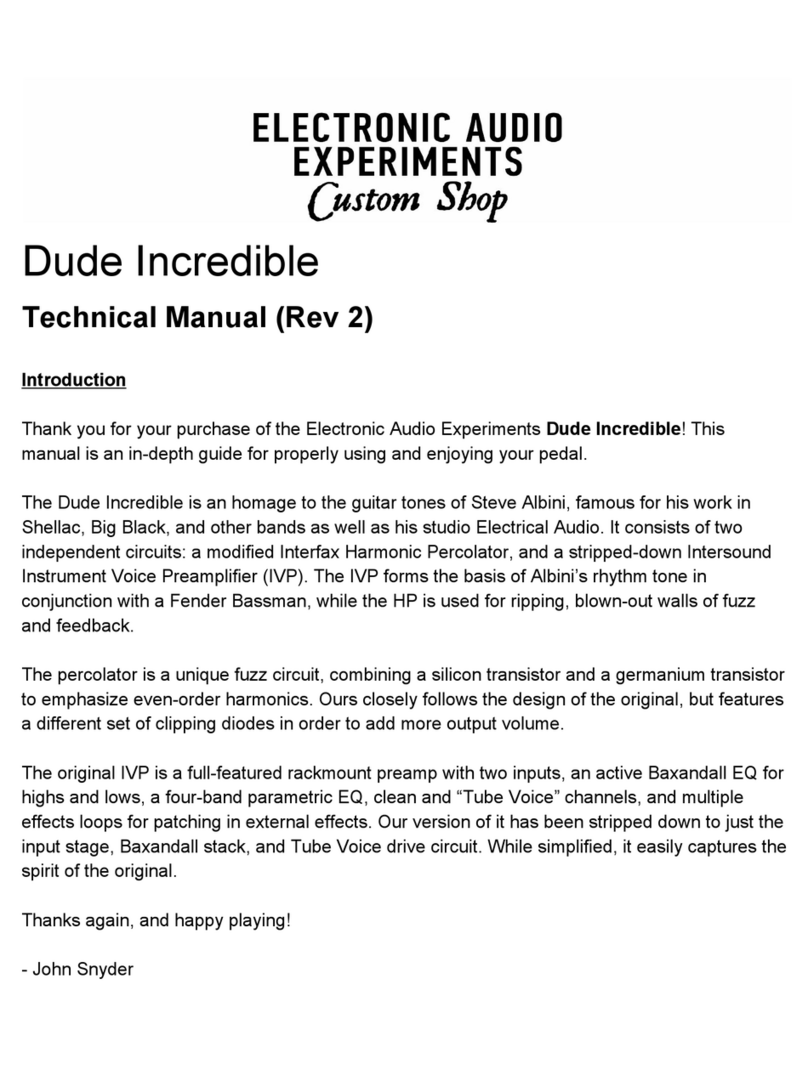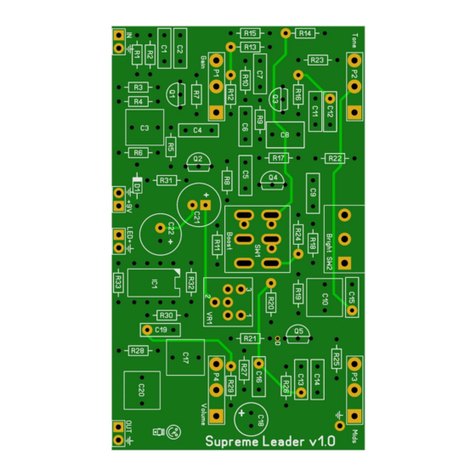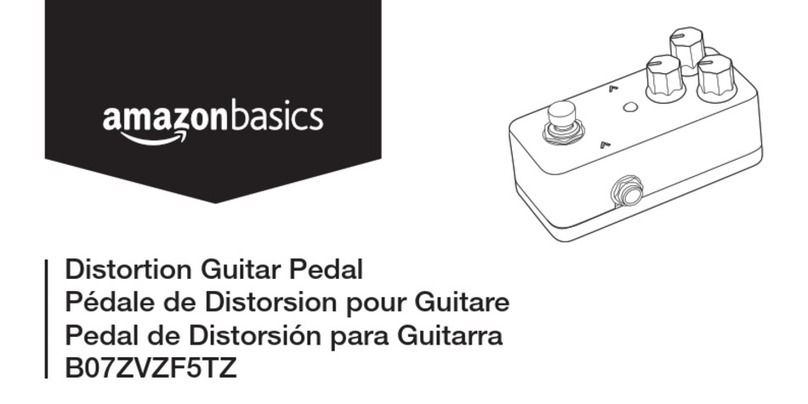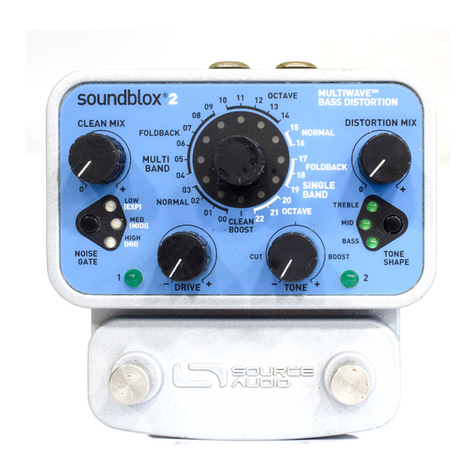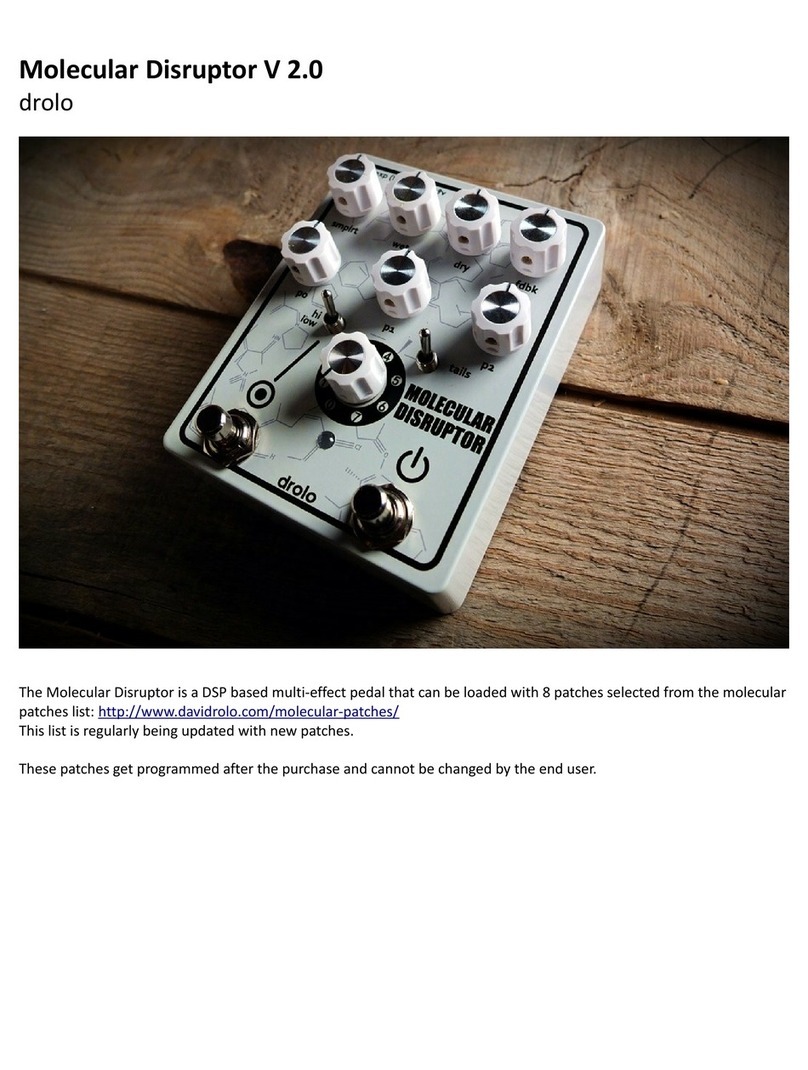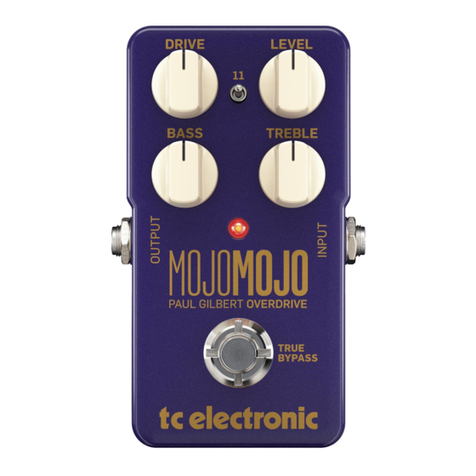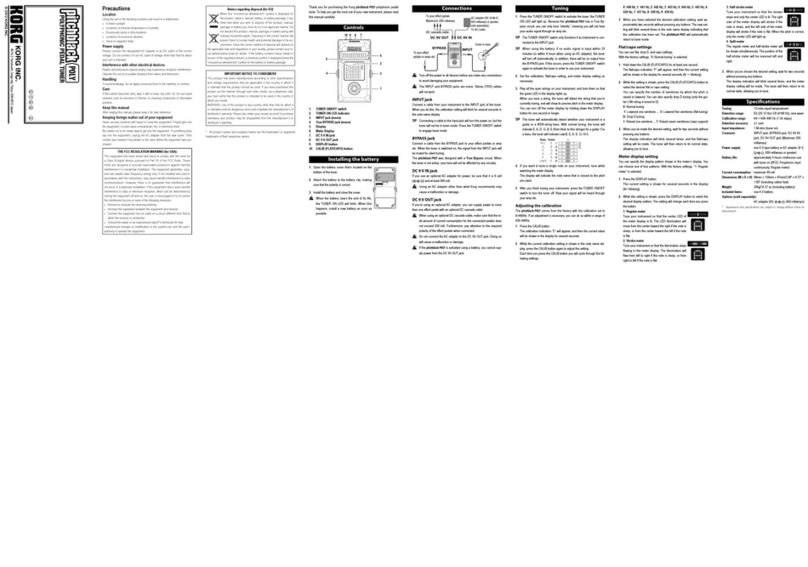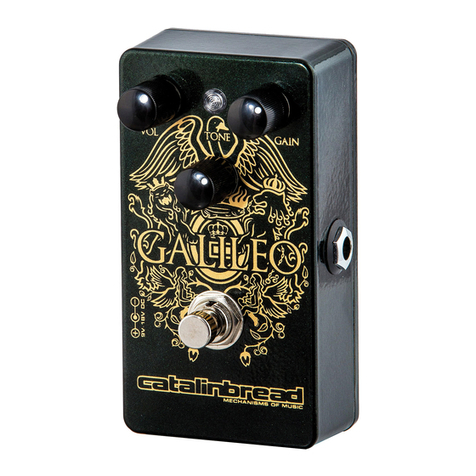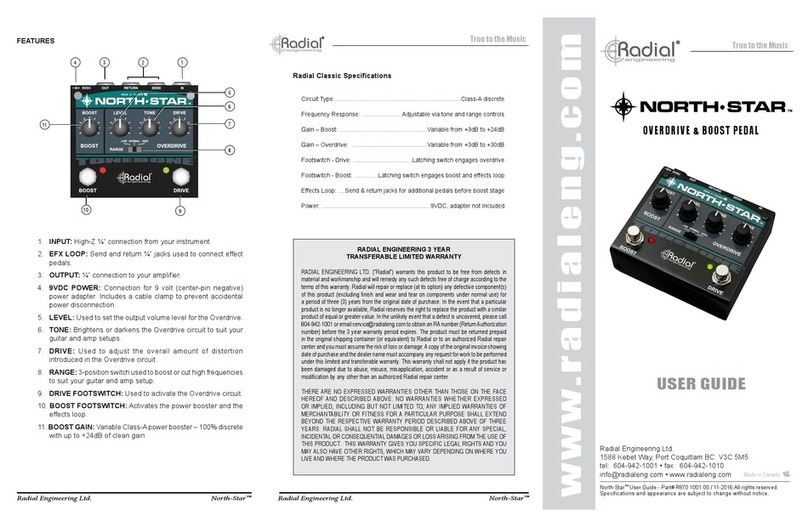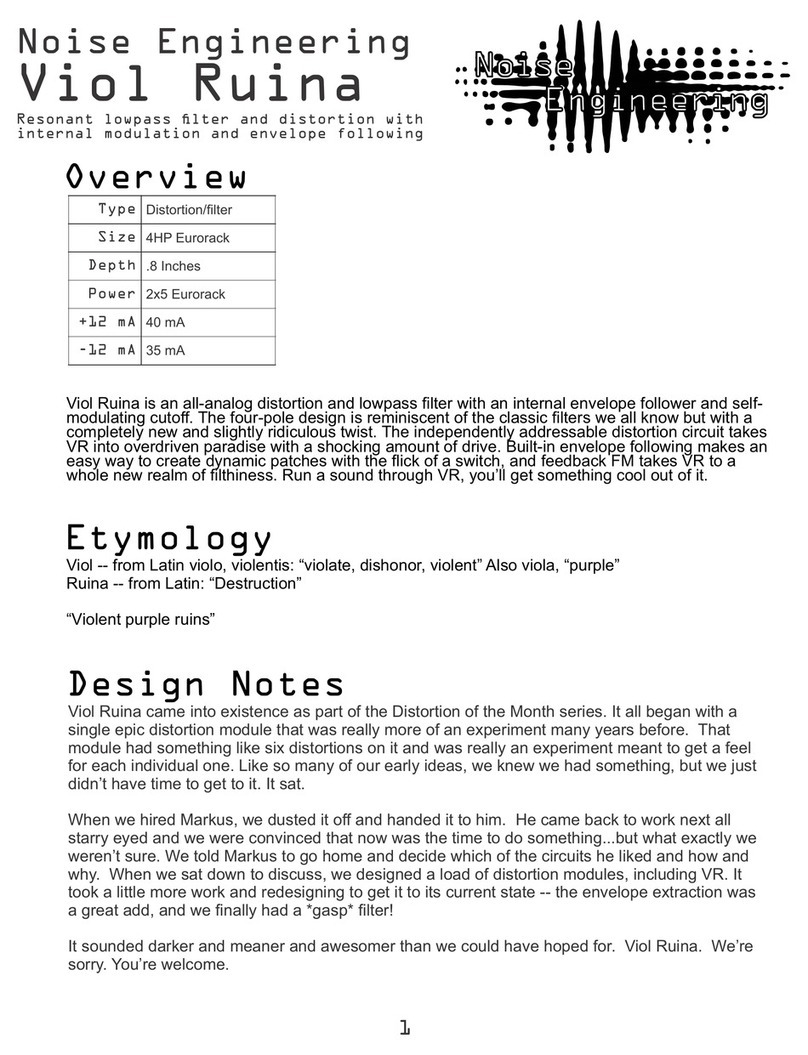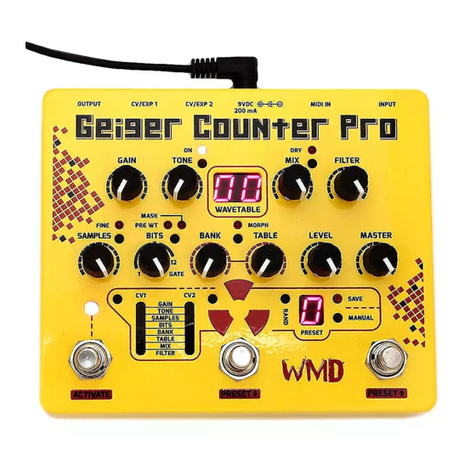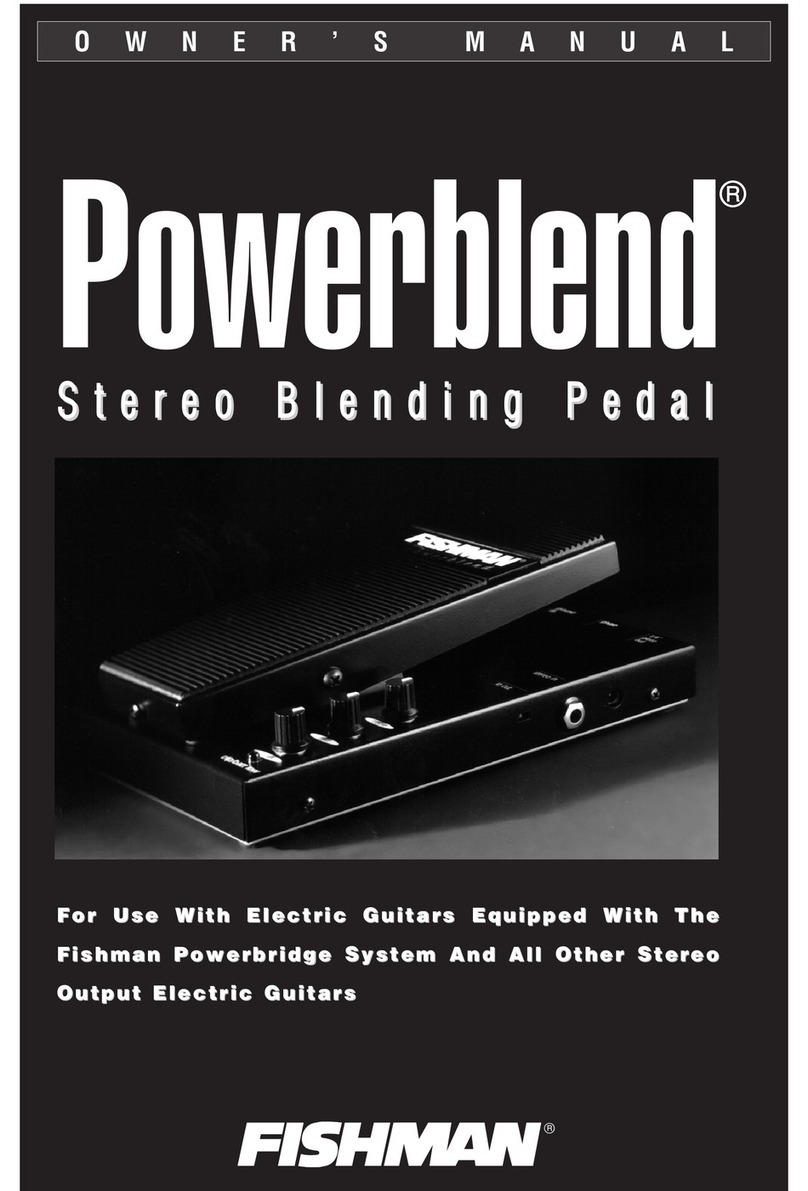INTRODUCTION
Thank you for purchasing the Electronic Audio Experiments Halberd. This manual is an
in-depth guide for properly understanding and enjoying your pedal. Below is a bit of
context. If you would like to skip ahead to how the pedal works, begin reading at the
Operation section on the next page.
The Halberd is a transistor-based overdrive engineered for 1) high dynamic range, 2)
superior note clarity, and 3) shaping an instrument’s frequency response to an
overdriven amplifier. The Halberd has a tendency towards a ragged treble response,
which is a result of my affinity for the tones of 90s post hardcore bands and Neil Young.
I would hesitate to call it a transparent drive, because it does not inherently preserve the
tone of one’s signal chain. It is more like a chameleon, responding in a unique way to
different pickups, string gauges, picking attack, even chord voicings. The pre-gain bass
control shapes the gain in a tactile fashion, allowing the user to control the compression
and note attack in a fashion not found in other EAE pedals.
At the risk of diving into buzzwords, the Halberd’s signal path is comprised of discrete
transistor gain stages. Integrated circuits, such as the op amps found in the Longsword,
consist of many transistors working in tandem – so many that the function of a particular
circuit block becomes abstracted into basic arithmetic. Filters and gain stages may be
configured in a straightforward and predictable manner via external components. In
contrast, when working with single transistors, bias, gain, and frequency response all
interact in a dynamic and nonlinear fashion. No approach is inherently superior, but I
feel that the unique saturation of the Halberd relies on its careful approach to gain
staging which embraces the quirks and nonlinearities of silicon and germanium
transistors while channeling them into something controllable and decidedly modern.
While the Halberd began as a standalone iteration of the preamp in our Sending delay,
it was radically transformed through several months of intense and occasionally manic
engineering development. The final outcome would never have been possible without
the help of some relentlessly discerning beta testers. In particular, I’d like to thank Bryan
from Soursound and Matt from Electrofoods Ultd. for their critical ears, sage circuit
advice, and encouragement.
I am extremely proud of this pedal and hope you enjoy it. Thanks for reading!
-John Snyder, EAE
